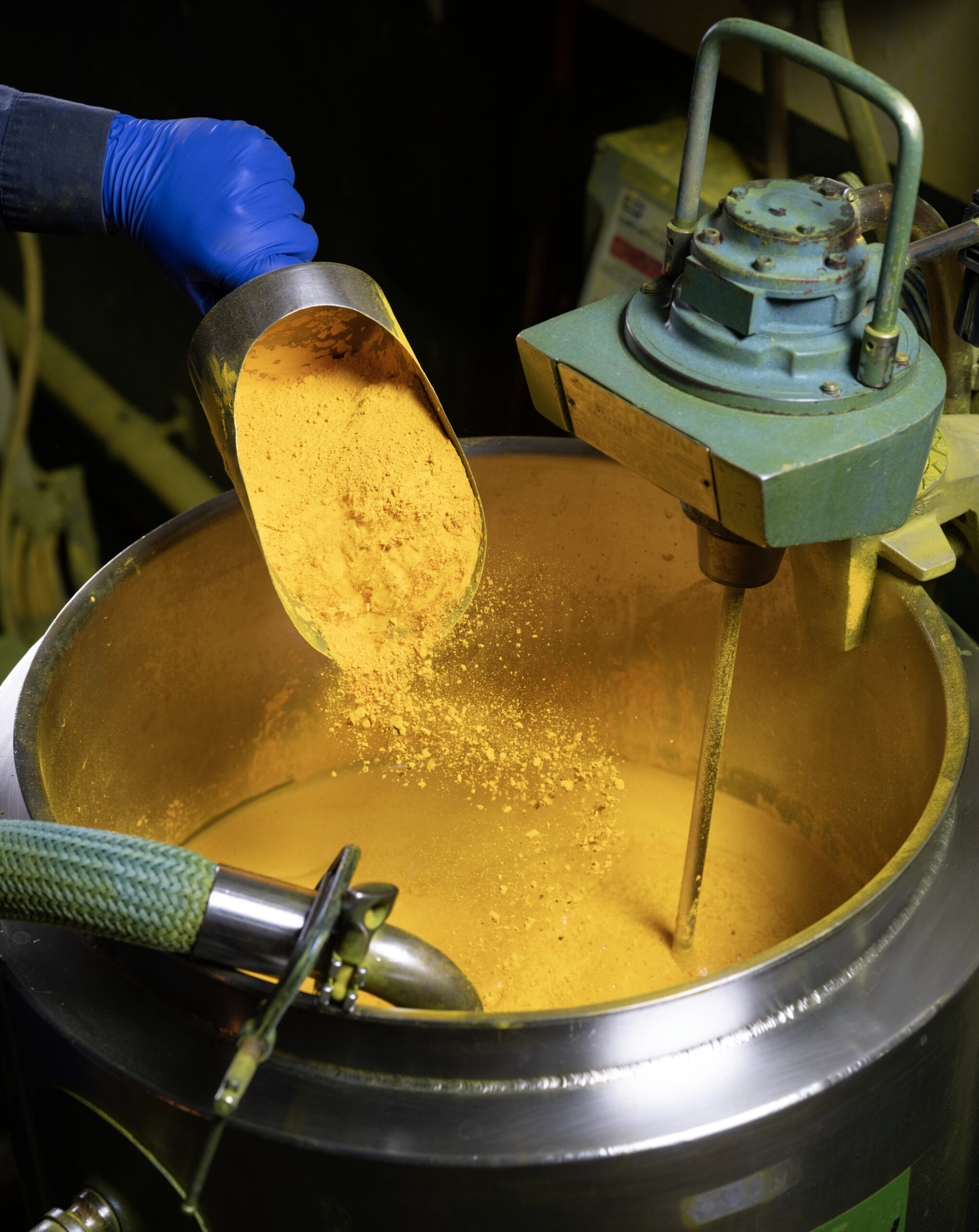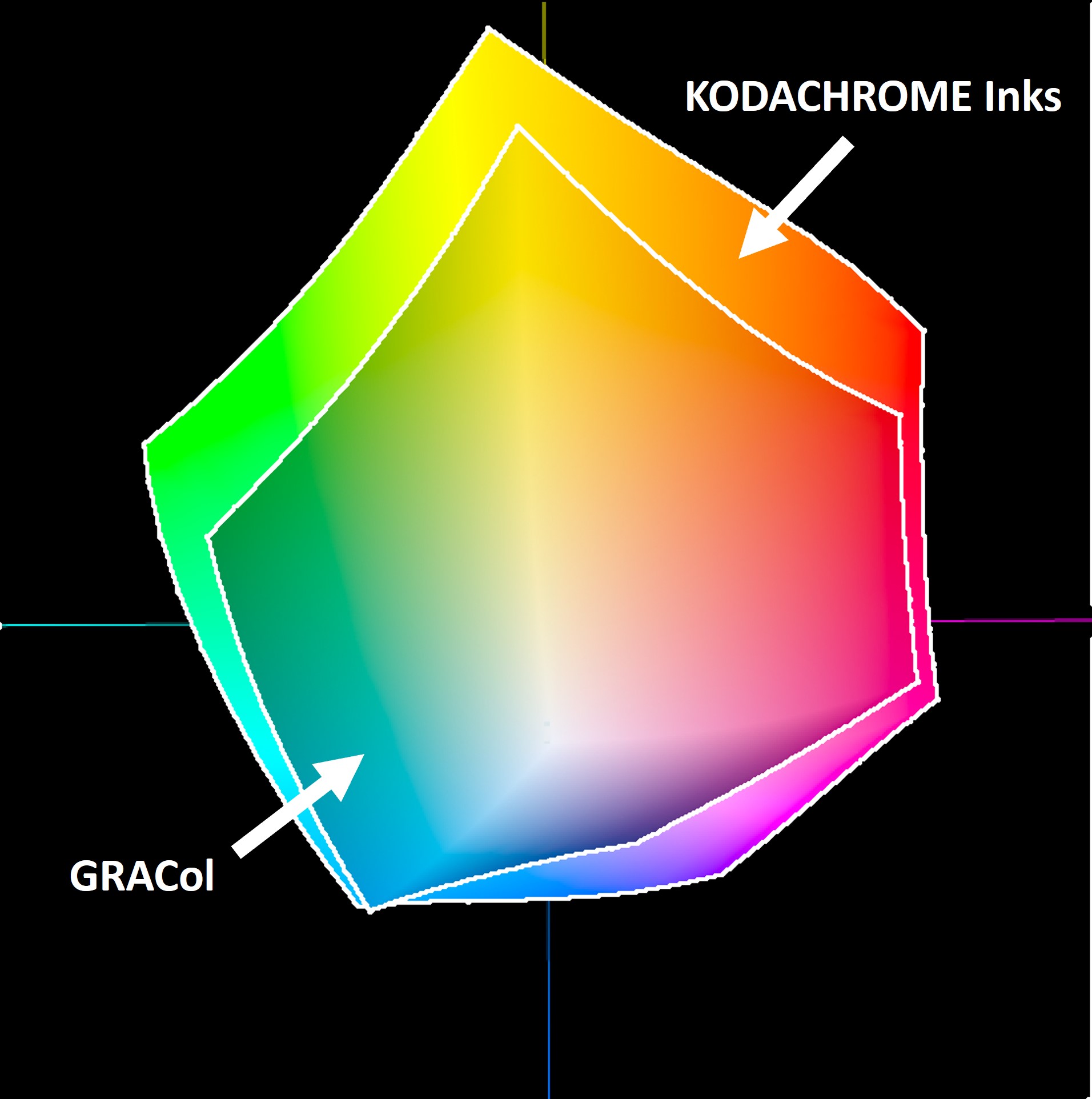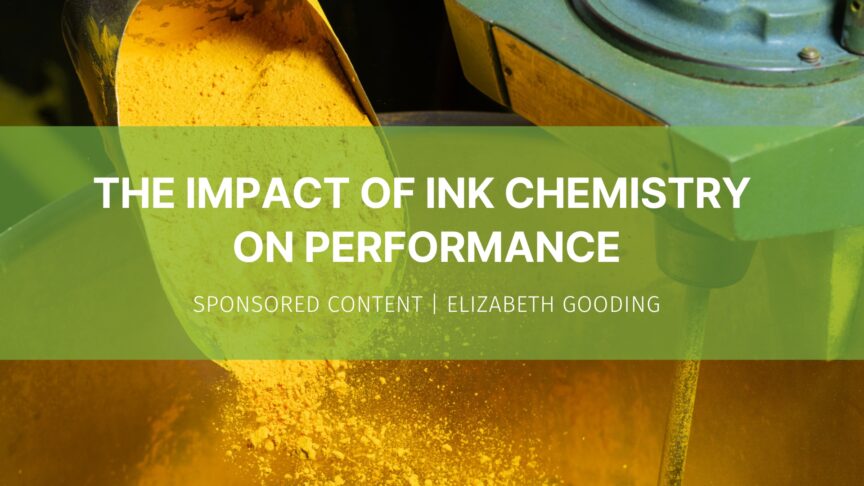Sponsored content from Kodak
Inkjet has taken hold in graphic arts printing due, in no small part, to advancements in aqueous pigment inks. This article looks at the impact of ink formulation choices on printhead compatibility, print quality, and production efficiency.
With water-based inks, print quality and drying efficiency go hand in hand. The demands on ink chemistry to deliver a high colorant load to the surface at a low enough viscosity to jet requires a cocktail of additives that vary by printhead, substrate and application intent. Each ingredient has an impact on the ability of the ink to jet without clogging or damaging nozzles, form intended dot sizes on the substrate, retain colorant on the surface of the substrate, dry without damaging the substrate, and to resist fading and rub off. The chemistry must also allow the ink to remain stable prior to jetting whether in the press or on a warehouse shelf. Finally, the ink recipe will also determine whether the ink complies with various environmental regulations.
Similar ingredients. Very different recipes.
In developing inkjet inks just looking at the types of ingredients can be deceiving. The difference in the quality of the ingredients, their ratios, and how they are processed is the difference between popovers, pasta, and pancakes. Just as a kitchen recipe is suitable for finishing in an oven, pot or skillet, an ink recipe determines whether pretreatment will be needed and the type of drying that will best finish the job.
The first ingredient in aqueous inks is the deionized water used as the carrier. However, the ratio of water composition to other ingredients can vary from around 30% to more than 50%. This carrier must be removed from the substrate after printing to leave behind a fixed and rub resistant image. Options for removal include absorption directly by the substrate, absorption through pretreatment of the substrate, through expedited evaporation by dryers or a combination of these. As expected, higher water content requires more drying energy, but other ingredients have an impact as well.
Anti-drying agents called humectants may be added to the recipe to maintain the viscosity of the ink for jetting without clogging nozzles, particularly when using piezoelectric printheads. Typically, these humectants are oil-based solvents, such as glycol, which require temperatures of over 200o C / 390 o F to evaporate, a level of heat that would damage most substrates. If residual oils from humectants are left on the surface it can lead to transfer or smearing.
Co-solvents and surfactants, added to control the behavior of the ink after jetting, can also impact drying. These ingredients can help to control ink bleed or dot gain. Other ingredients may include pH controllers, biocides, defoamers, and resin binders. The latter is used in the all-important pigment aspect of the ink to form a suspension of the colorant.
The proof is in the pigment
According to expert inkjet quality engineer Mark Bale of DoDxAct “Optimizing pigment dispersion is the key to maximizing the color gamut for aqueous inks. If the pigment is dragged into the paper by the absorption of the water, the chroma of the pigment will be reduced.” Creating the perfect pigment dispersion is a complex process driving many OEMs to purchase these solutions from a third party.
First, high-quality pigment must be suspended in a liquid medium and milled. The pigments used for inkjet inks are typically dispersed to small particle sizes of between about 50 and 200 nanometers (nm). Smaller particle sizes yield higher coloring power. These tiny particles must be evenly distributed throughout the dispersion to avoid clumping or settling. They must also be stabilized so that the particles don’t settle.
Aqueous pigment dispersions are stabilized by creating a charge around the pigment to keep the particles separate within the highly polarized, deionized water. This is the base upon which the rest of the ink chemistry is based. Some combination of the other ingredients discussed above will be added to help the pigment particles bind to the substrate, enable it to jet, avoid clogging printheads, and allow longer shelf life for the ink. All these additives have an impact on the cost of the ink, the amount of ink needed to achieve target color and coverage, and the cost of drying the ink.

KODACHROME Ink production
Kodak designs, develops and manufactures their own aqueous pigment inks starting with the all-important pigment. Their proprietary micro milling technology results in pigment particles that are typically smaller than 40 nm. The resulting particles are also highly uniform. Randy Vandagriff, Senior Vice President, Print with Kodak says, “The high levels of ultra-fine pigment used in our KODACHROME and EKTACOLOR Inks, in combination with our continuous inkjet technology, allows color targets to be reached using a lower volume of ink than with competing presses. Our unique process results in very thin dried ink layers with lower drying energy. The result is richer, purer, more vibrant colors within an exceptionally wide color gamut.”

At Kodak, the use of continuous inkjet printheads and proprietary inks are closely intertwined. The continuous recycling of ink as part of the CIJ process avoids the need for high levels of humectants and other additives that deter nozzle clogging. Low humectants, along with a high load of ultrafine pigment, ensure that even high coverage jobs can be dried efficiently at high speed.
Consistent results from Kodak inks are further supported by using polymer dispersants to stabilize the pigment particles enhancing water resistance and image permanence. Vandagriff emphasizes, “The choice of dispersant is critical to the performance of an ink. We have also opted to drive our superior results without the use of volatile organic compounds (VOCs) for a more sustainable product that improves the working environment for press operators using Kodak equipment.”
The performance of inks can be objectively measured in terms of both the color delivered and the cost to deliver it. The gamut volume for production print produced with KODACHROME Inks on a KODAK PROSPER ULTRA 520 Press has been measured at 95% larger than SWOP (web offset) and 39% larger than GRACoL (sheetfed offset). While head-to-head tests have not been measured, the composition of the inks described earlier means less ink volume is needed to achieve full coverage and color performance than competitive formulations. This helps to reduce the running costs of the inkjet press. “In addition to using less ink, we believe that our EKTACHROME and KODACHROME Inks are the most competitively priced pigment inks on the market today,” said Vandagriff.
Ink chemistry is a careful balancing act that is optimized alongside the printer design including drying. Kodak has struck a balance that maximizes the flexibility of their press configurations with multiple drying options, reduced energy consumption, and wide substrate compatibility while delivering vibrant color that exceeds the CMYK offset gamut.

